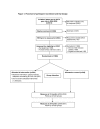The 'Women's Lifestyle Study', 2-year randomized controlled trial of physical activity counselling in primary health care: rationale and study design
- PMID: 17645805
- PMCID: PMC1971069
- DOI: 10.1186/1471-2458-7-166
The 'Women's Lifestyle Study', 2-year randomized controlled trial of physical activity counselling in primary health care: rationale and study design
Abstract
Background: Physical inactivity is an independent risk factor for diabetes and heart disease. There is evidence that increasing physical activity can reduce the risk of developing these chronic diseases, but less evidence about effective ways to increase adherence to physical activity. Interventions are therefore needed that produce sustained increases in adherence to physical activity, are cost-effective and improve clinical endpoints.
Methods: The Women's Lifestyle Study is a two year randomized controlled trial involving a nurse-led intervention to increase physical activity in 40-74 year old physically inactive women recruited from primary care. Baseline measures were assessed in a face-to-face interview with a primary care nurse. The intervention involved delivery of a 'Lifestyle script' by a primary care nurse followed by telephone counselling for nine months and a face-to-face nurse visit at six months. Outcome measurements are assessed at 12 and 24 months. The primary outcome is physical activity measured using a validated physical activity questionnaire. Secondary outcomes include blood pressure, weight, waist circumference, physical fitness (step test), serum HbA1c, fasting glucose, lipids, insulin, and quality of life (SF36). Costs were measured prospectively to allow a subsequent cost-effectiveness evaluation if the trial is positive.
Discussion: Due to report in 2008, the Women's Lifestyle Study tests the effectiveness of an enhanced low-cost, evidence-based intervention in increasing physical activity, and improving cardiovascular and diabetes risk indicators over two years. If successful in demonstrating improvements in health outcomes, this randomized controlled trial will be the first to demonstrate long-term cardiovascular and diabetes risk health benefit, in addition to improvements in physical activity, from a sustainable physical activity intervention based in primary care.
Trial registration: Australian Clinical Trials Registry (ACTR), ACTRN012605000490673.
Figures
References
-
- Centers for Disease Control and Prevention . Physical activity and health: A report of the Surgeon General. Atlanta , US Dept of Health and Human Services. Centers for Disease Control and Prevention, National Center for Chronic Disease Prevention and Health Promotion; 1996.
-
- van Aalst I. Kazakov D. McLean G . SPARC facts. Results of the New Zealand sport and physical activity surveys (1997-2001) Wellington , Sport and Recreation New Zealand; 2003.
-
- PriceWaterhouseCoopers . Type 2 diabetes. Managing for better health outcomes. Diabetes New Zealand Inc; 2001. p. 109.http://www.diabetes.org.nz/resources/pwcreport.html
-
- Ajwani S. Blakely T. Robson B. Tobias M. Bonne M . Decades of disparity: Ethnic mortality trends in New Zealand 1980-1999. Wellington, New Zealand , Ministry of Health and University of Otago; 2003.
Publication types
MeSH terms
LinkOut - more resources
Full Text Sources
Medical


